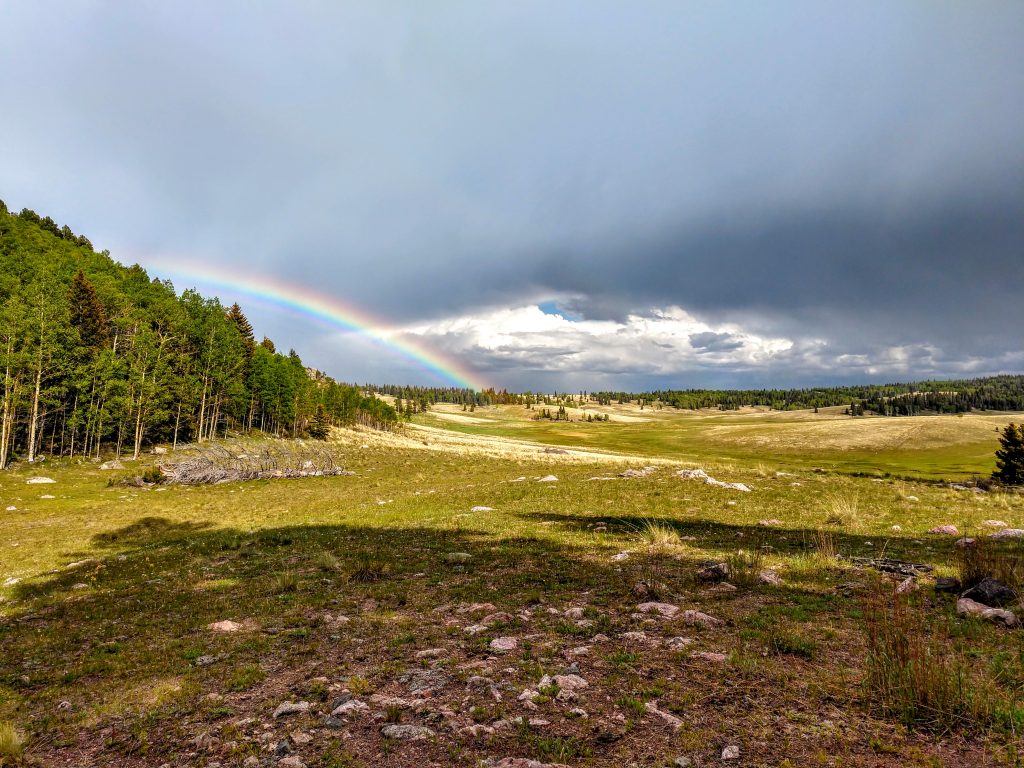
By Hannah Grover | New Mexico Political Report
August 25, 2021
Gov. Michelle Lujan Grisham signed an executive order Wednesday that aims to set aside 30 percent of the state’s lands and waters by 2030 for conservation and another 20 percent for climate stabilization.
This comes amid President Joe Biden’s America is Beautiful Initiative, which aims for 30 percent of land and waters nationwide to be set aside for conservation by 2030, an effort known as the 30×30 plan.
The executive order directs several state agencies including the Energy, Minerals and Natural Resources Department, the Office of the State Engineer, the Indian Affairs Department, the Department of Game and Fish and the Economic Development Department’s Outdoor Recreation Division to identify areas for protection to meet this goal.
According to the International Union for Conservation of Nature and the U.S. Geological Survey, currently about 6 percent of New Mexico is currently protected. The IUCN defines a protected area as “clearly defined geographical space, recognised, dedicated and managed, through legal or other effective means, to achieve the long term conservation of nature with associated ecosystem services and cultural values.” This includes national parks, wilderness areas and nature reserves.
The executive order creates a committee that will inventory the state’s protected areas and make recommendations to conserve additional lands.
A new study published this week in the journal Nature Ecology and Evolution found that preserving 30 percent of land for conservation purposes could protect 70 percent of terrestrial plant and vertebrate animal species, according to a press release. This study was conducted by the Nature Map Consortium, which is a project launched by the International Institute for Applied Systems Analysis, the International Institute for Sustainability, the UN Environment Programme World Conservation Monitoring Centre and the UN Sustainable Development Solutions Network. In addition to protecting species, preserving 30 percent of land would help sequester carbon and protect freshwater resources.
Nearly 100 businesses in New Mexico, led by the Partnership for Responsible Business, the Las Cruces Green Chamber of Commerce and the Santa Fe Green Chamber of Commerce, penned a letter to the governor in support of such an initiative.
“Over the last two decades, we have lost over a million square miles of wild land to development across the globe. With each square inch we destroy, we steadily reduce our chances of combating climate change. This crisis threatens our agricultural outputs, human health, access to water and much more, all of which will have tremendous economic, social, and political impacts,” the letter states.
The governor’s action received broad support from the environmental community as well as the outdoor recreation community.
In a statement, Camilla Simon, the executive director of Hispanics Enjoying Camping, Hunting and the Outdoors, said Lujan Grisham is “fostering a united approach in tackling the climate crisis that will protect our nation’s lands and waters, improve access to outdoor spaces, and ensure that our nature-based traditions are passed on to future generations.”
“New Mexicans are deeply connected to the landscape and traditions that many enjoy like fishing, hunting, ranching and wood gathering,” Simon said, adding that these depend on protection of and access to public lands and waters.
Meanwhile, Chuck Tripp, the chairman of New Mexico Backcountry Hunters & Anglers, praised the 30×30 objective to protect biodiversity.
“We have an obligation to the generations that follow us to protect our traditions, pass on our unique heritage and enhance opportunities for hunting, fishing, gathering wild food and [maintaining] cultural practices that are a way of life for many New Mexicans,” he said in a statement.
And, by protecting watersheds, Ralph Vigil, the chairman of the New Mexico Acequia Commission, said the governor’s executive order will help agriculture.
“Healthy lands and waters are crucial to the survival of our communities, culture and traditions in New Mexico,” he said in a statement. “Local farmers and the acequia community have an intimate connection to the land and our watersheds. We know that protecting those watersheds and the lands our rivers flow from is essential for our businesses and the food we provide.”
This article originally appeared in the New Mexico Political Report.

